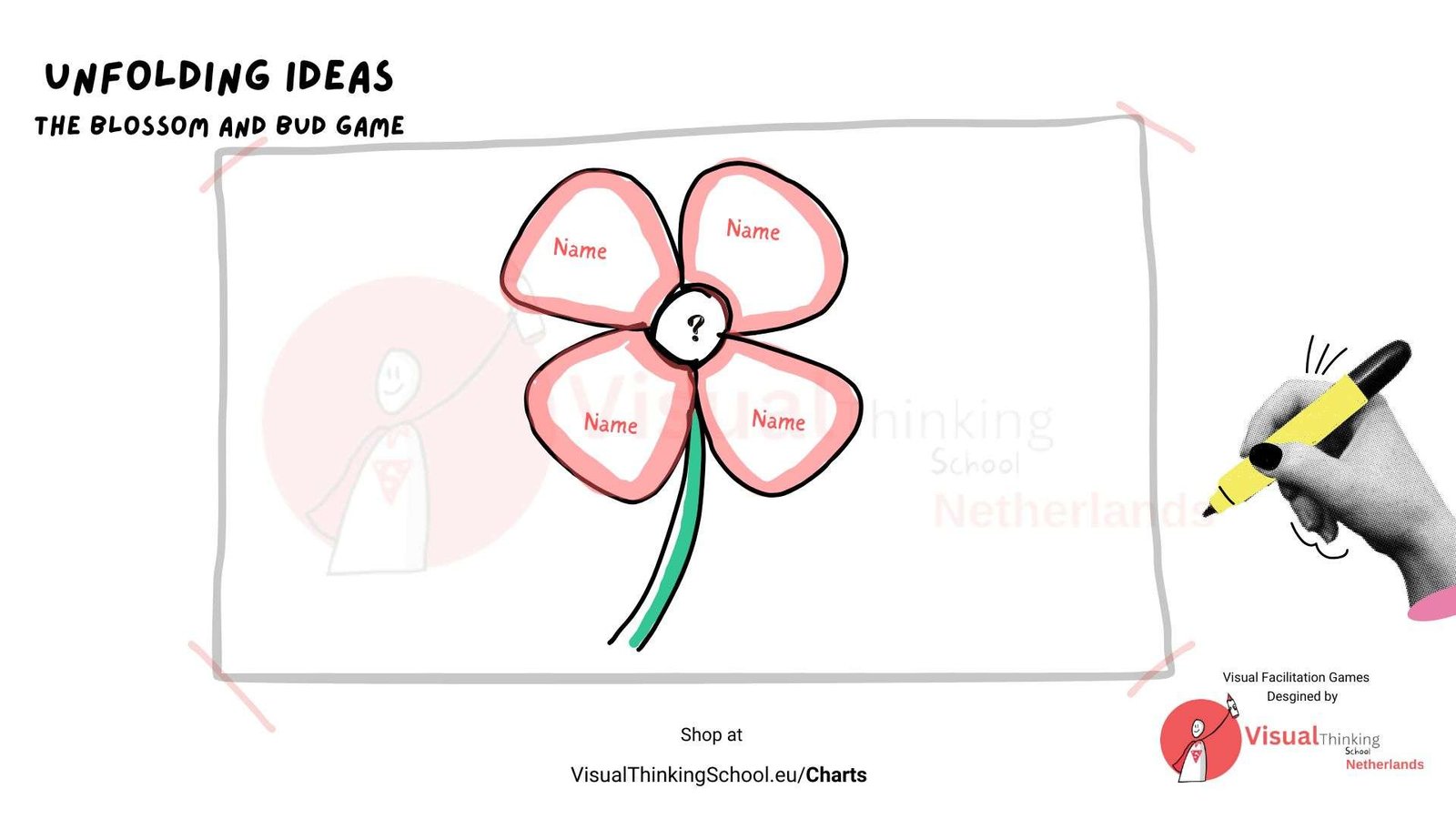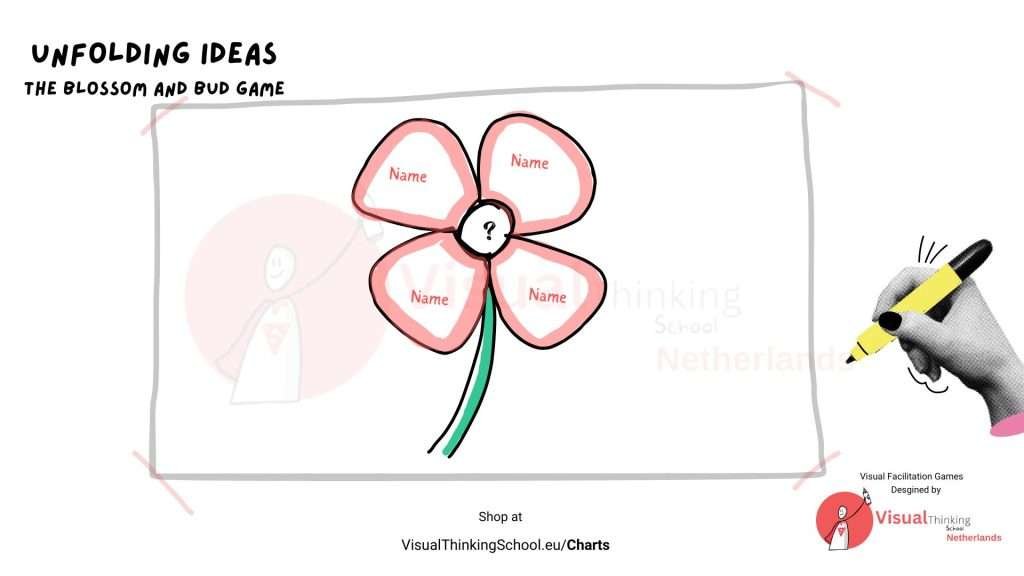
The Blossom and Bud Facilitation Game

The Blooming Ideas Facilitation game is designed to encourage group participation, idea-sharing, and creative problem-solving using visual metaphors. By working through four distinct petals of a flower, participants will explore multiple dimensions of a topic, generate insights, and align on actionable steps. The goal is to harness the collective thinking of the group in a structured, engaging, and playful manner.
This game is ideal for retrospective meetings, brainstorming sessions, or when teams need to align around a shared vision or problem. It’s particularly effective when you want to:
Use this game when you’re looking for a fresh and interactive way to approach problem-solving or decision-making with your team.
You can also purchase the visual facilitation charts for this game at Visual Thinking School Charts.
Objective: Brainstorm initial thoughts on the topic.
Game Mechanics:
Tip: For more structure, the dice can be rolled to decide the order in which people share their post-its.
Objective: Delve deeper into the ideas and find connections.
Game Mechanics:
You can use a random question generator or roll a dice to assign prompts for added playfulness.
Objective: Refine and prioritize ideas.
Game Mechanics:
At this stage, you can introduce external resources to deepen your exploration, such as reviewing best practices for ideation or creativity tools (for instance, check out this https://visualthinkingschool.eu/charts
Objective: Translate ideas into actionable steps.
Game Mechanics:
At the end of the game, the group can take a moment to reflect on the process and outcomes. A short discussion on what worked well or what could be improved can be a valuable part of closing the session.
For a deeper dive into how to enhance your facilitation skills and lead engaging sessions like this, check out our Visual Facilitation Certification Course at Visual Thinking School Courses.
Why Blooming Ideas Works
This game works because it taps into the collaborative spirit of teams and uses visual metaphors to break down complex topics into manageable parts. The phased approach of brainstorming, exploration, refinement, and action ensures that no idea is left unexplored, while the game elements like dice and post-its add a playful, engaging touch.
By utilizing this facilitation game, you will not only unlock creative thinking but also drive alignment and action in a way that’s both structured and fun. Try incorporating Blooming Ideas Facilitation into your next meeting and watch your team bloom!

Piyuesh is the founder of Visual Thinking School, Netherlands. He is passionate about empowering organizations and classrooms with Visual Thinking Skills. He conducts trainings onBusiness Sketchnotes™ , Classroom Sketchnotes™, Visual Business Storytelling™, Graphic Facilitation™
In his free time, piyuesh likes practicing Aerial Yoga, Acro yoga, Krav Maga and Pole workouts.